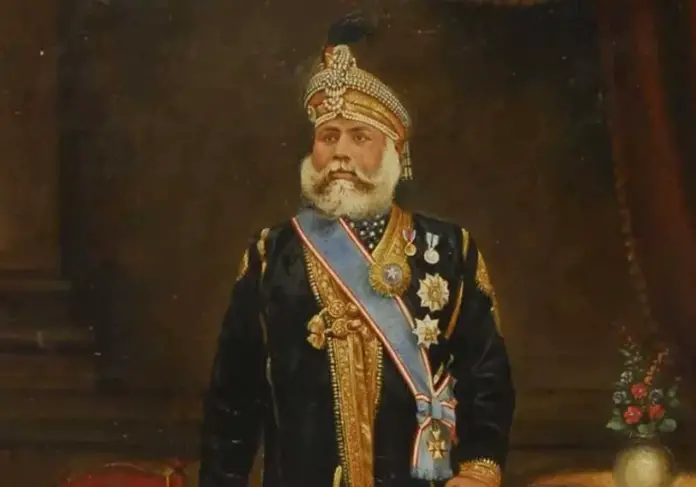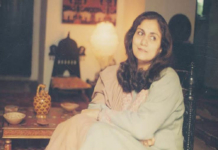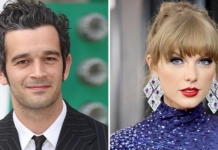The last Hindu ruler of Sindh, Raja Dahir, died defending his kingdom during the invasion by Muhammad bin Qasim in the eighth century CE. Raja Dahir reigned the area of the sub-continent that included present-day Sindh, some parts of Afghanistan, Balochistan (including Iranian Balochistan) and parts of Punjab.
Raja Dahir’s kingdom was conquered by Muhammad bin Qasim in 712 CE. Qasim was an Arab general for the Umayyad Caliphate. Dahir was killed during an intense fight with Qasim and died near Nawabshah.
On April 10, a Twitter trend with #RajaDaharOurNationalHero caught everyone’s attention when it crossed 10.1k Tweets in just a couple of hours. On the other hand, his recognition as a hero on social media by a large number of people raised questions. Is Pakistan passing through the critical phase of revisiting history and recognizing its lost heroes?

University of Jamshoro Institute of Sindhology – which works on the history and culture of Sindh – Director Dr. Ishaq Smejo backed the frequent calls from Sindhi activists for declaring Raja Dahir as our national hero. He said every nation had the right to pay tribute to those characters who defended their homeland against foreign invaders by sacrificing their lives.
The trend on social media applications to embrace Raja Dahir as a hero is not new in Sindh. Ghulam Murtaza Syed, commonly known as G.M Syed, was a Sindhi nationalist who earlier supported the demand of Pakistan and was an active member of the All India Muslim League but later dissociated himself from the League over differences.
Moreover, known historian Dr. Mubarik Ali, Dr. Azad Qazi and many other acclaimed writers, authored books on Raja Dahir’s bravery and the administration and justice system worked under the Brahman king.
Awami National Party leader late Senator Haji Adeel, who is a Pashtun Nationalist, declared in 2010 that “our hero is Raja Dahir, not Muhammad bin Qasim”.
Some other developments such as the declaration of Ranjit Singh as a hero, recognition of Jallianwala Bagh incident and events to remember Bhagat Singh, which happened during the past couple of years, show that the country is ready to embrace those sons of soils who are lost in our national history due to tempering with the details of events.
Months before, the former government of Pakistan Tehreek-e-Insaf installed the statue of Maharaja Ranjit Singh at Lahore Fort with a declaration from former federal minister Fawad Chaudhary that the Sikh ruler was the real hero of Punjab.
Javed Langah, a writer, was of the view, “At last, Raja Ranjit Singh, by riding his horse, made exit from his samadhi situated in the northeast of Lahore’s Badshahi Mosque and appeared in his old kingdom.”
Punjab, he added, had kept trying to create a fake history and instead of portraying Raja Porus, and Raja Ranjit Singh as real heroes, presented Ghori, Ghaznavi, Soori and Abdali as heroic characters who invaded the sub-continent including Punjab and looted its rich resources.
Interestingly, the former government had also demanded an apology from the British government over the Jallianwala Bagh incident. In a tweet a year before, Chaudhary said, “Fully endorse the demand that British empire must apologise to the nations of Pakistan, India and Bangladesh on Jallianwala Bagh’s Massacre and Bengal famine …these tragedies are the scar on the face of Britain, also Kohe Noor must be returned to Lahore Museum where it belongs.”
It was also a top trend on Pakistan social media with the hashtag #JallianwalaBagh last year.
People in Amritsar’s Jallianwala Bagh gathered in April 1919 to record protests over the arrest of Congress leaders like Dr. Saiffuddin Kitchlew, who bitterly opposed the idea of division of India.
Since national textbooks made a vague reference to the incident, it was a surprising as well as welcoming move when for the first time, a government officially started realizing the role of Indo-Pak leaders in history which otherwise never came under discussion in the national curriculum.
The Amritsar Massacre had awakened the consciousness of the people of the sub-continent against foreign rule. It later led to the start of the Non-Cooperation Movement (1920-1922) which was widely supported by nationalist Muslim leaders like Hakim Ajmal, Maulana Muhammad Ali, Mukhtar Ansari and Maulana Azad.
During the last few years, Lahore has also seen frequent demands for naming Lahore’s Shadman Chowk after Bhagat Sing. The revolutionary, along with his two comrades, was hanged at the site on March 23, 1931.
With Punjab declaring a Sikh its national hero and Sindh in wait for official recognition of a Hindu ruler, has Pakistan approached the moment where it will fix history and set it in the right direction? Perhaps, it is the most confusing question for every student of Indo-Pak impartial history.







